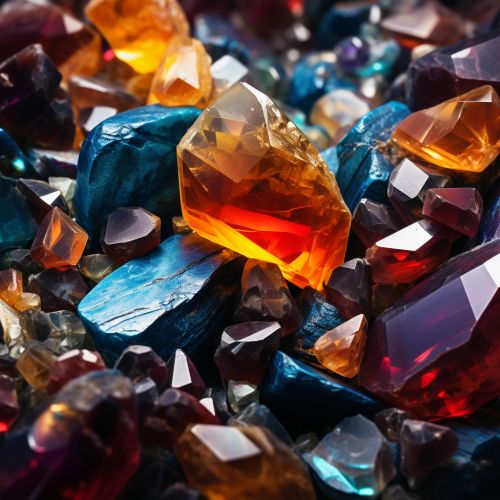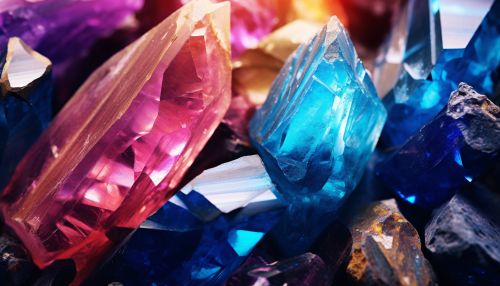Mineral
Introduction
A mineral is a naturally occurring inorganic solid that has a crystal structure and a defined chemical composition. For a substance to be classified as a mineral, it must possess these four key characteristics. Minerals are the building blocks of rocks, which are the solid outermost layer of the Earth, known as the crust.
Classification of Minerals
Minerals are classified based on their chemical composition. There are over 5,000 known mineral species, but only about 100 are considered common minerals. These common minerals are divided into two major groups: silicate minerals and non-silicate minerals.
Silicate Minerals
Silicate minerals are the most abundant group of minerals on the Earth's crust, comprising over 90% of it. They are made up of silicon and oxygen, the two most abundant elements in the Earth's crust, along with one or more metals. Examples of silicate minerals include quartz, feldspar, mica, and olivine.
Non-Silicate Minerals
Non-silicate minerals are less common than silicate minerals, but they are still very important. They are divided into several classes, including carbonates, halides, sulfates, sulfides, oxides, and native elements. Examples of non-silicate minerals include calcite, halite, gypsum, pyrite, hematite, and gold.


Physical Properties of Minerals
Minerals are identified based on their physical properties. These properties include color, streak, luster, hardness, cleavage, fracture, and specific gravity. Each of these properties is discussed in detail below.
Color
Color is the most obvious property of a mineral, but it can also be the most deceptive. While certain minerals always have characteristic colors, others can come in a variety of colors due to impurities.
Streak
The streak of a mineral is the color of its powder when it is rubbed on a streak plate (a piece of unglazed porcelain). Unlike the color of the mineral itself, the streak color does not vary and is therefore a more reliable identification tool.
Luster
Luster refers to the way light reflects off the surface of the mineral. There are two main types of luster: metallic (shiny like metal) and nonmetallic (not shiny like metal). Nonmetallic luster can be further classified into several categories, including vitreous (glassy), pearly, silky, greasy, and dull.
Hardness
Hardness is a measure of a mineral's resistance to scratching. It is determined using the Mohs scale, which ranks minerals from 1 (softest) to 10 (hardest). For example, talc has a hardness of 1, while diamond, the hardest known mineral, has a hardness of 10.
Cleavage and Fracture
Cleavage refers to the way a mineral breaks along flat surfaces. These surfaces are determined by the crystal structure of the mineral. Fracture, on the other hand, refers to the way a mineral breaks in a pattern that is not along its cleavage planes.
Specific Gravity
Specific gravity is a measure of the density of a mineral. It is the ratio of the weight of a mineral to the weight of an equal volume of water.
Economic Importance of Minerals
Minerals are essential to the economy. They are used in a wide variety of industries, from construction and manufacturing to technology and agriculture. Some minerals, such as gold and diamonds, are also valued for their aesthetic appeal and are used in jewelry.
Conclusion
Minerals are a vital part of our everyday lives. They make up the rocks and soils that form the Earth's crust, and they are used in many different industries. By studying minerals, we can learn more about the Earth's history and the processes that have shaped it.
